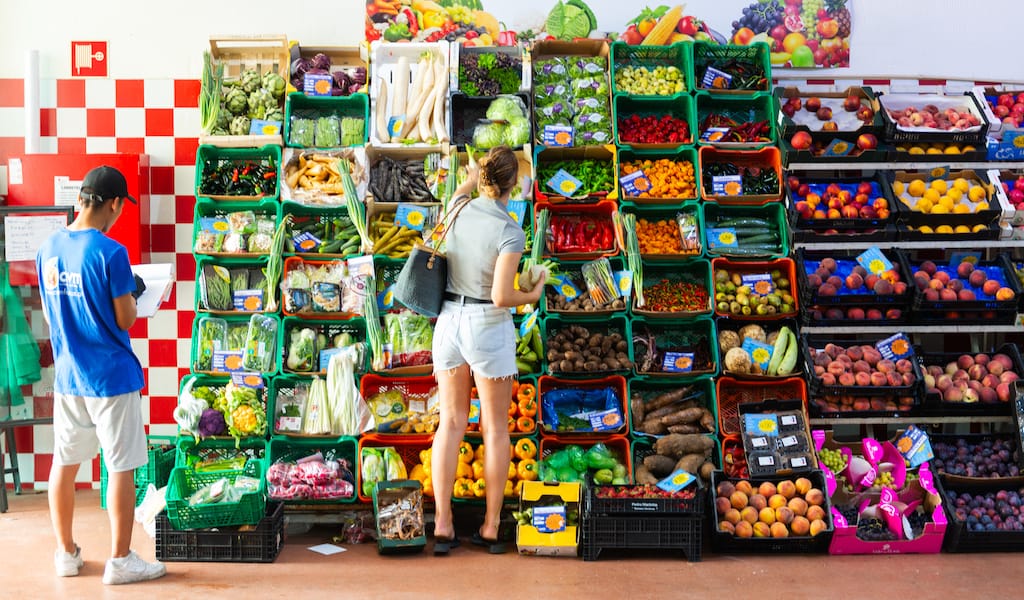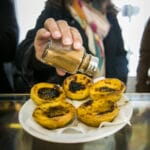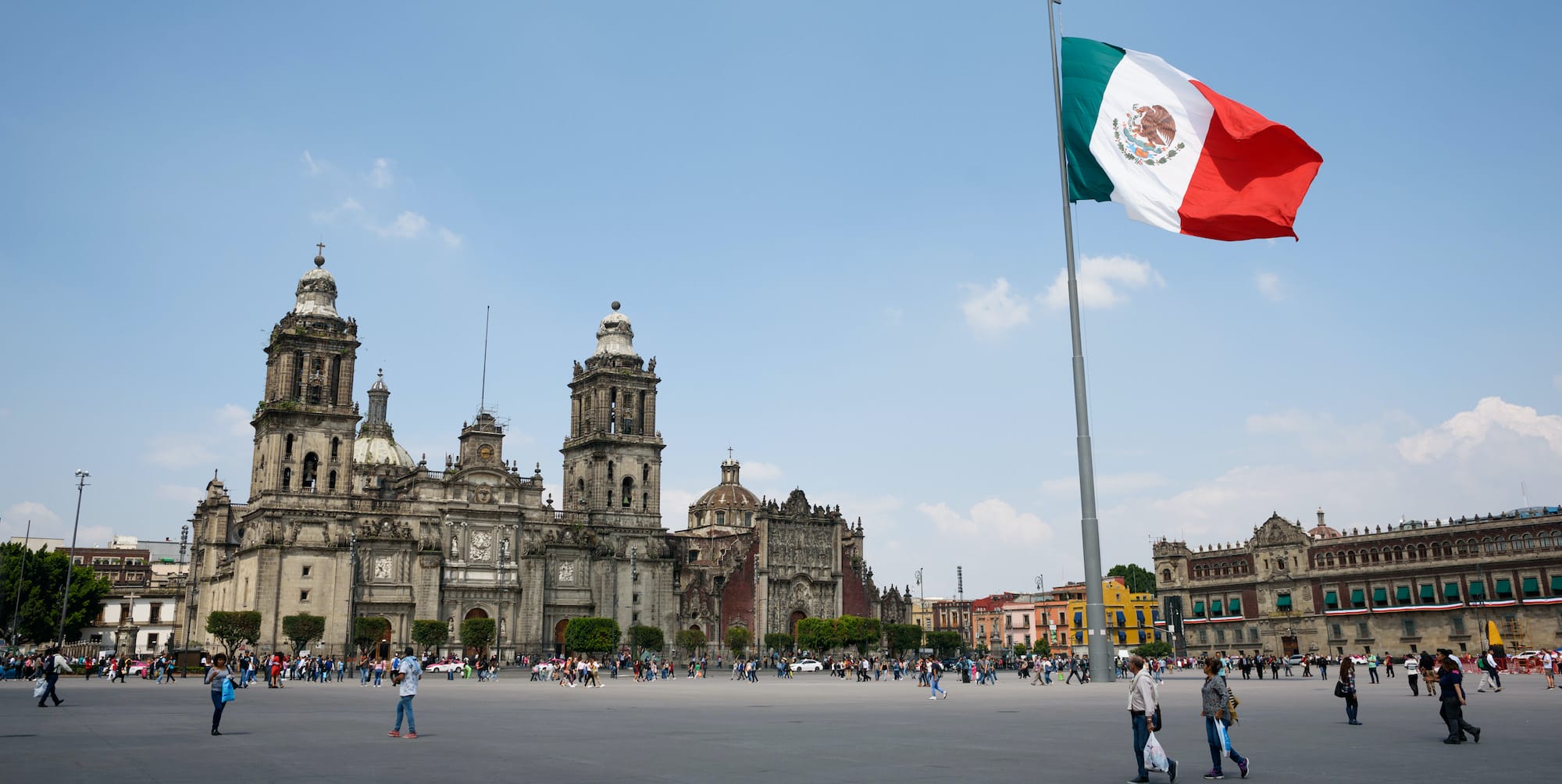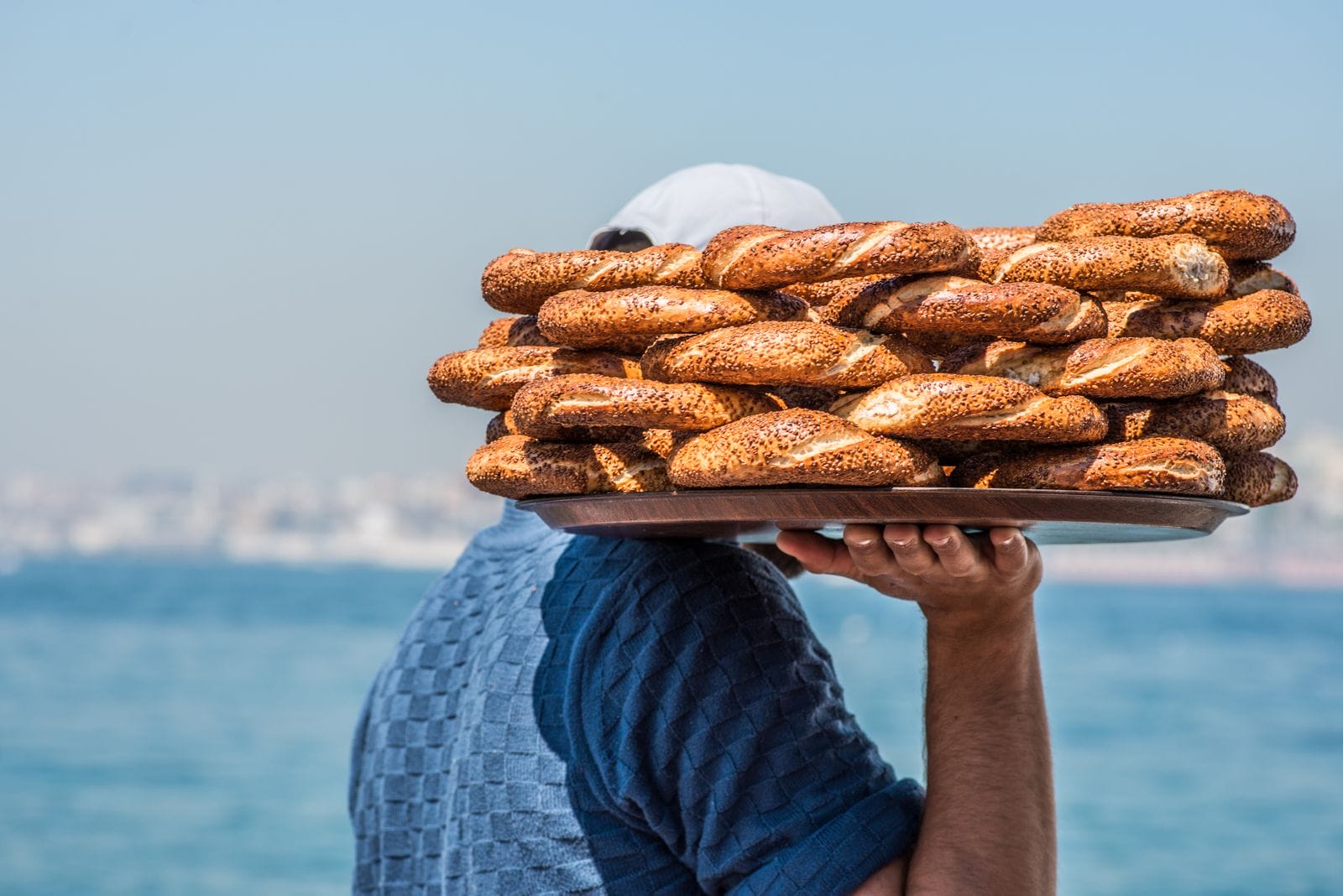Lisbon, it could be said, is a tough city for fresh markets. The Greater Lisbon area is home to 28 market spaces, yet only ten of these currently witness any significant commercial activity. And among these ten, many have seen immense changes, with Mercado da Ribeira, Mercado Campo de Ourique and Mercado de Algés essentially operating more as food courts rather than fresh markets. Mercado 31 de Janeiro, in Lisbon’s Saldanha neighborhood, has also seen its share of changes in its near century of existence that spans various incarnations. But it stubbornly remains a relevant marketplace for Lisbon shoppers.
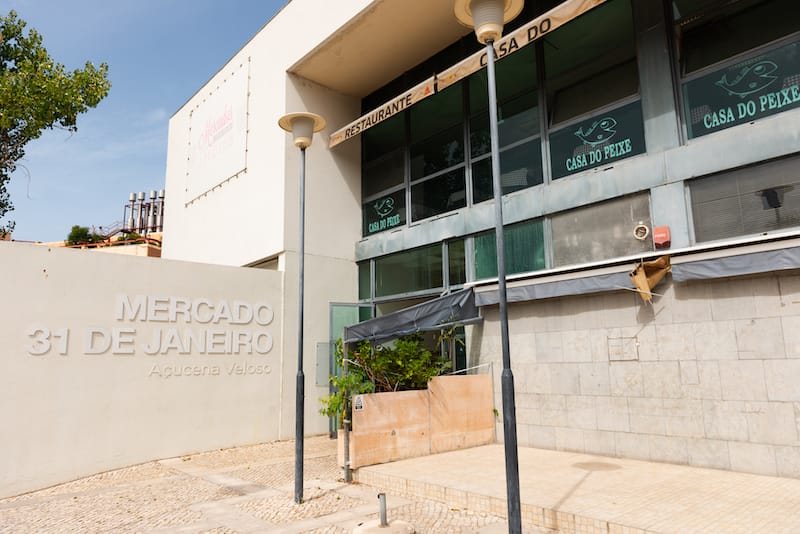
The market was previously referred to as Mercado Matadouro because of its proximity to Lisbon’s municipal slaughterhouse, a massive structure built in 1863 and demolished in 1955. That version of the market took the form of graceful, semi-open-air stalls built in 1924 and ultimately demolished in the 1990’s (the former market can be seen in this video from 1989). The contemporary Mercado 31 de Janeiro appears more office block than fresh market, and it could be said that it’s influenced more by fishmongers than by butchers. Its official name is Mercado 31 de Janeiro – Açucena Veloso, the first half a reference to Portugal’s first anti-monarchy revolution, the latter an homage to the woman known as “Lisbon’s most famous fishmonger” and “fishmonger to the chefs,” a beloved market vendor who died in a car accident in 2018.
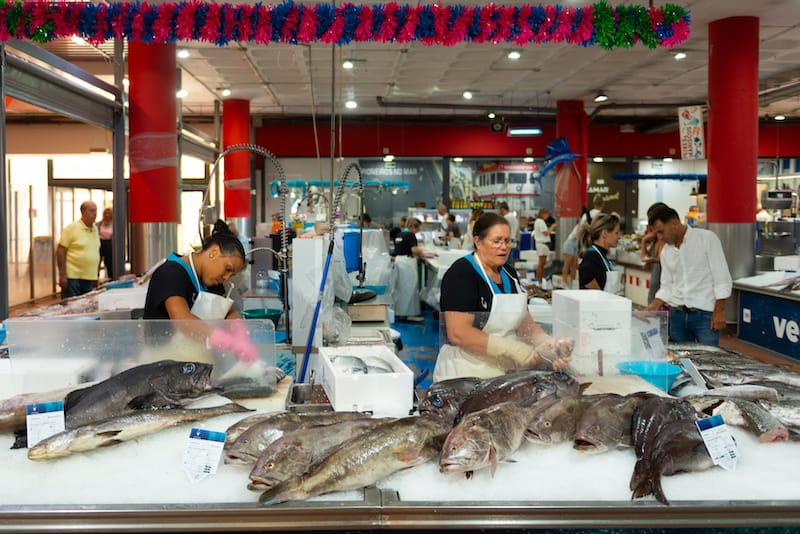
Not surprisingly, nearly half of Mercado 31 de Janeiro’s market hall is dedicated to fish and seafood, with marble tables loaded down with tuna, scabbard fish, cuttlefish, oysters, mackerel, mullet, octopus, cockles, rockfish, seabass and many, many other items from the Atlantic Ocean and elsewhere. If there’s a better location in central Lisbon for fish and seafood, we’ve yet to find it.
“I’ve been working at this market for 48 years,” says Lourdes, a fishmonger at a stall called Pioneiros no Mar. In typically sassy Portuguese fishmonger fashion, she points at an aged customer and adds, “This guy has been coming here since he was young!”
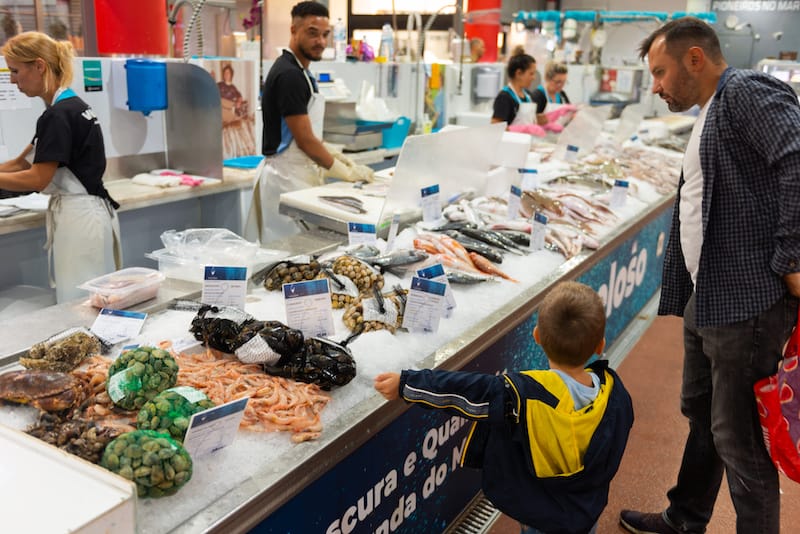
We ask Lourdes if business is good and she replies, “Nowadays, people work, and they don’t shop at markets so much; they don’t have time. But if you come on Saturdays, it’s completely full.”
Behind Lourdes’s stall is a long row of frozen fish and seafood, and west of there, a massive stall selling salt cod. On a Tuesday morning in early fall, there’s a few dozen shoppers in the market, the majority scanning the seafood section.

The southern end of the market is where you’ll find fruit and vegetable vendors. In particular, Mercado 31 de Janeiro is a great place to buy greens, and one stall has water-filled buckets of the bitter greens known in Portugal as grelos, as well as Swiss chard and kale, all looking crisp and fresh. We also spotted beautiful bundles of herbs – coriander with the roots intact and delicate leaves of mint. Avm, a stall at the market’s northern end, has the usual produce but also a wall of largely imported items including exotic chilies, cassava and other tubers, tomatillos, frisée and the like.
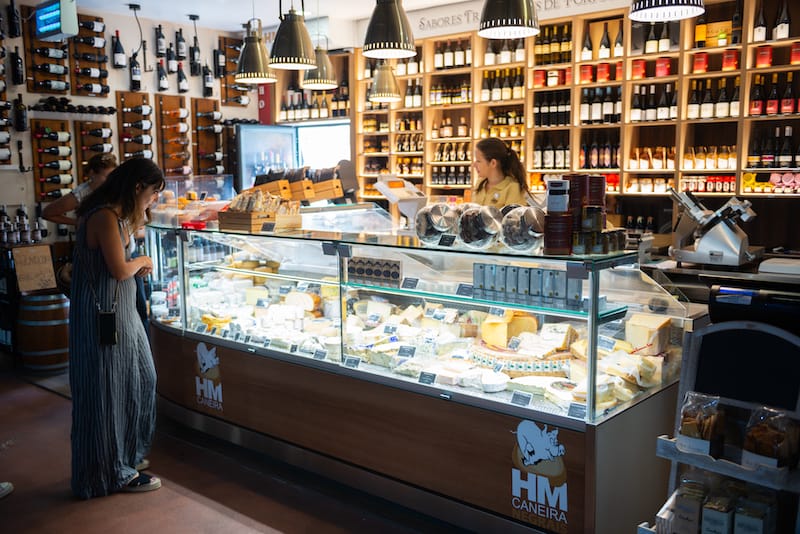
Along the periphery of the market are stalls selling bread and other baked goods, and butcher shops. Rota das Índias sells dried spices in bulk, and Mercado 31 de Janeiro is even home to a haberdashery and a florist. The market is a particularly good place to pick up cheese. HM Caneira is a deli-like shop that, in addition to cult Portuguese lactic treats such as Rainha do Pico butter from the Azores, or Casa Pratas chévre-style goat cheese from the Lisbon region, stocks artisanal imported cheese from France, Spain and elsewhere – relative rarities in Portugal. Queijaria Portuguesa, a stall on the market floor, stocks at least 15 different types of domestic cheeses made from cow, goat and sheep milk. We ask the cheesemonger, Patrícia, about business, and she shares a now-familiar dynamic: “When I first came here, seven years ago, there were more customers. Today, most of the weekday customers are older. On weekends, the customers are much younger.”
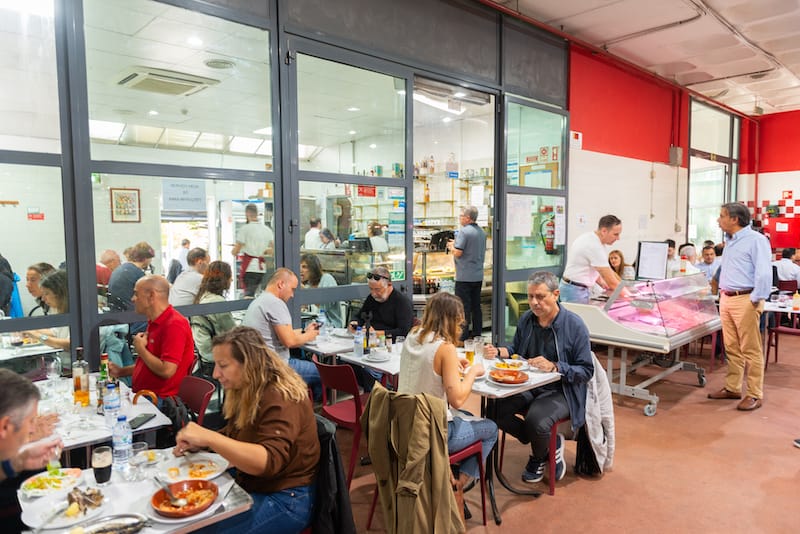
Although Mercado 31 de Janeiro has not gone full food court like its counterparts, there are a couple intriguing eating options. Cantina is a casual restaurant located inside the market structure. The protocol here is to step in line, and upon arriving at a glass display case, the owner will ask you, “What do you want to eat?” Point to whatever fish or cut of meat looks good, and it will be grilled or fried for you. There’s a few tables in the restaurant, but most customers prefer the tables in the market hall itself or on an outdoor balcony. Dishes are simple and come fast – think grilled sardines, skewers of grilled meat, or battered and deep-fried hake served with tomato rice.
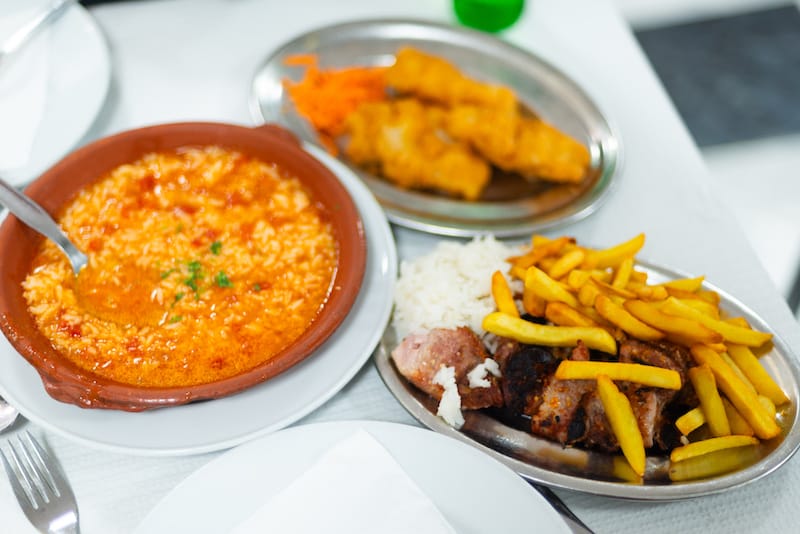
At the other end of the market is HM Caneira, a stall that sells suckling pig from Negrais, a town just north of Lisbon with a reputation for the dish. The piglets are available by plate – supplemented with pickles, chips and the peppery sauce that accompanies suckling pig in Portugal – or paired with carbs in the form of an empanada, risol or sandwich. It’s meaty, fatty, indulgent and delicious.
On our way out, we ask a butcher, Joaquim Carreira, how Mercado 31 de Janeiro still manages to pull shoppers when other Lisbon markets appear to be dying. He replies, “It’s in a central location, and it’s been here a long time,” adding “It’s one of the best markets in Lisbon.” And we tend to agree.
Austin BushAustin Bush
Published on October 09, 2023
Related stories
April 18, 2024
Trips-Page-TestMexico City has a complex and fascinating cultural identity: it is a place where pre-Hispanic, Colonial, and contemporary influences collide in a riot of street food, and bustling markets. Here, the Aztec ruins of the city aren’t just buried under the surface, they become a backdrop to a thriving, ever-changing metropolis, a microcosm of many…
April 4, 2024
LisbonQuick Bite: On this food tour in Lisbon, we’ll experience a cultural feast, tasting some of the most diverse bites of the city’s gastronomy and meeting the people behind them. The oldest city in Western Europe, once the hub of a trading empire that connected Macau in the east to Rio de Janeiro in the…
February 28, 2024
Food Tours NDQuick Bite: This full-day Istanbul market tour draws from our best-of list in the European side’s Karaköy neighborhood and the Asian Kadıköy, tied together by a Bosphorus crossing, visiting two markets on two continents. Our favorite Istanbul experiences include exploring the eateries in local markets and crossing the Bosphorus on the public ferry. The route for…







































